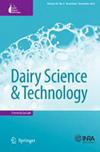Geospatial Fluid Milk Processing Preferences: Is Consumer Taste Perception the Key Factor?
Q2 Agricultural and Biological Sciences
引用次数: 1
Abstract
Consumption of ultrapasteurized milk is marked by extensive global variability; in the U.S. and U.K., less than 10% of fluid milk is marketed as ultrapasteurized, compared to >80% in France, Spain and Portugal. Fluid milk taste perception amongst U.S. consumers is that high-heat treatment of milk, as in ultrapasteurization, generates undesirable differences in taste compared to low-temperature/conventional pasteurized treatment. Although highly trained experts can distinguish characteristics in controlled studies, it remains unknown if general consumers can detect a difference or are subject to confirmation bias. In testing sensory perception in a defined untrained population, our findings indicate that the general consumer is unable to distinguish ultrapasteurized from pasteurized milk. On this basis, we conclude that presumptive “consumer taste perception” that speciously impacts fluid milk processing types in the U.S. market precludes noted benefits to ultrapasteurization not only in flexibility for storage and distribution, but also in reduction of public health risks.地理空间液态奶加工偏好:消费者味觉感知是关键因素吗?
超高温牛奶的消费具有广泛的全球差异;在美国和英国,只有不到10%的液态奶是超高温灭菌的,而在法国、西班牙和葡萄牙,这一比例超过80%。美国消费者对液态奶味道的感知是,与低温/传统巴氏灭菌处理相比,高温处理的牛奶,如超高温灭菌,会产生不希望的味道差异。虽然训练有素的专家可以在对照研究中区分出特征,但普通消费者是否能察觉到差异,或者是否会受到确认偏误的影响,仍然不得而知。在测试感官知觉的定义未经训练的人群中,我们的发现表明,一般消费者无法区分超巴氏消毒牛奶和巴氏消毒牛奶。在此基础上,我们得出结论,假定的“消费者口味感知”明显影响了美国市场上液态奶加工类型,排除了超高温灭菌的显著好处,不仅在储存和分销的灵活性方面,而且在减少公共卫生风险方面。
本文章由计算机程序翻译,如有差异,请以英文原文为准。
求助全文
约1分钟内获得全文
求助全文
来源期刊

Dairy Science & Technology
农林科学-食品科技
CiteScore
2.30
自引率
0.00%
发文量
0
审稿时长
2 months
期刊介绍:
Information not localized
 求助内容:
求助内容: 应助结果提醒方式:
应助结果提醒方式:


